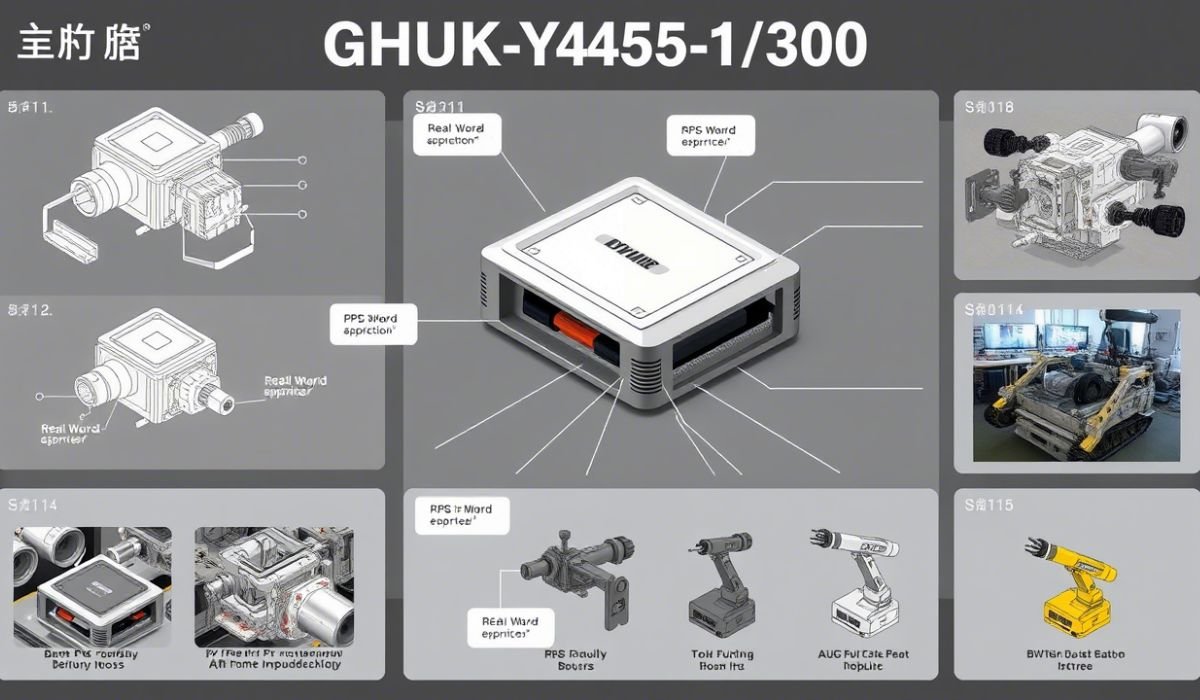In today’s fast-paced, technology-driven world, unique identifiers are everywhere—embedded in software, stamped on product packaging, attached to datasets, or labeled on network equipment. One such identifier that has sparked curiosity is ghuk-y44551/300. At first glance, it might appear to be a meaningless string of letters and numbers. However, when examined more closely, it reveals a fascinating story about how codes like this help manage, track, and streamline systems across various industries.
This article takes a deep dive into ghuk-y44551/300, breaking down what it might represent, how similar identifiers are used in different sectors, and why understanding them matters more than ever in the modern age.
What is ghuk-y44551/300?
ghuk-y44551/300 is an example of a structured identifier—an alphanumeric code that likely represents a specific item, version, or configuration within a broader system. While this exact string might not correspond to a widely recognized product or protocol, it’s constructed in a way that resembles real-world identifiers used in software engineering, product inventory, academic databases, and network configurations.
Identifiers like this serve a fundamental purpose: to uniquely label and organize information in complex systems, making it easier to retrieve, track, and manage.
Code Breakdown
Alphanumeric Composition
The code is composed of three main parts:
-
ghuk: A four-letter prefix that might represent a project name, department, or category.
-
y44551: A unique numeric and alphanumeric sequence, potentially a model or version number.
-
/300: A sub-identifier or variation marker, possibly indicating a specific configuration, iteration, or unit number.
Each component of this identifier has its own potential significance depending on the context in which it’s used.
Analysis of Components
Let’s break down the possible meanings of each part:
-
“ghuk” – This prefix could denote a department code, product family, or software module. Many organizations use short-lettered tags to distinguish among internal systems.
-
“y44551” – This could represent a version, batch, or serial number. It’s common in software development and manufacturing to track changes or distinguish between releases.
-
“/300” – The slash typically separates a main code from a variant. In practice, this could indicate a specific edition, revision, or subset of the original.
Together, they form a layered identifier useful for both categorization and traceability.
Where Is ghuk-y44551/300 Used?
Although ghuk-y44551/300 itself may be a generic placeholder, identifiers of this type are widely used across different sectors. Let’s explore where similar codes play a critical role.
1. Software Development & Version Control
In software engineering, identifiers like this are incredibly common. Think of commit hashes in Git, API versioning, or build identifiers used in continuous integration pipelines. These codes help:
-
Track changes in source code
-
Differentiate feature releases
-
Reproduce specific builds during testing or debugging
A string like ghuk-y44551/300 could very well be a build number or internal patch release, allowing teams to collaborate on large codebases with clarity and precision.
2. Product Management
In retail, e-commerce, and manufacturing, every product variant—color, size, configuration—needs its own identifier. This supports:
-
Inventory control
-
Quality assurance
-
Supply chain management
For example, a tech company could use ghuk-y44551/300 to represent a limited edition version of a gadget, such as a smartphone with a unique memory specification or finish.
3. Networking and IT Infrastructure
System administrators and network engineers use similar identifiers to manage:
-
Device configurations
-
IP blocks
-
Server clusters
In this context, ghuk-y44551/300 might indicate a specific router setup or a configuration profile used in automated deployment systems like Ansible or Puppet.
4. Academic Research & Data Cataloging
In academic databases, identifiers are critical for organizing information. Consider:
-
Dataset tags in repositories like Zenodo or Figshare
-
Unique codes for research articles in indexing services
-
Version-controlled experiment logs
A researcher might assign ghuk-y44551/300 to a specific dataset version, making it easier to cite or retrieve during peer review.
Why Identifiers Like ghuk-y44551/300 Matter
Unique identifiers might seem trivial at first, but they serve as the backbone of order and structure in digital systems. Here’s why they’re so important:
Standardization
Using standardized formats (like ghuk-y44551/300) ensures consistency across departments, platforms, and even international organizations. This consistency reduces errors and improves interoperability.
Traceability
Need to trace a bug back to a specific software version? Or find which batch a defective product came from? A well-structured identifier makes that possible. It provides a clear audit trail that enhances accountability and troubleshooting.
Efficient Information Retrieval
In large systems or databases, searching by name or description isn’t efficient. Using a unique identifier narrows down the search and ensures you get the exact version or item you’re looking for.
Real-World Examples of Similar Identifiers
-
Git Commits: Each commit has a unique hash like
4f2a1d9/150, allowing developers to track changes. -
ISBN Numbers: Used in publishing to uniquely identify books—e.g.,
978-3-16-148410-0. -
SKU Codes: Used in retail to track products—e.g.,
ELEC-1024/100.
These examples reinforce how essential identifiers are, and how ghuk-y44551/300 fits into this broader ecosystem.
Conclusion
At first glance, ghuk-y44551/300 might look like a random jumble of characters. But when we peel back the layers, it becomes clear that identifiers like this play an essential role in modern life. From software development to academic publishing, these codes help structure, classify, and control the systems we rely on every day.
Whether you’re a developer trying to roll back a faulty build, a product manager overseeing multiple SKUs, or a researcher managing large volumes of data, understanding how these codes work gives you an edge. They’re more than just text—they’re the language of digital organization.
FAQs
Q1: Is ghuk-y44551/300 a real product or code?
Not exactly. It’s a sample identifier used to illustrate how structured codes function in various industries. It mimics the format of many real-world identifiers.
Q2: What does the slash (/300) signify in such codes?
The part after the slash usually denotes a version, subcategory, or specific configuration of the main code. It’s commonly used in version control or product categorization.
Q3: Why are alphanumeric identifiers used instead of just numbers?
Alphanumeric codes provide more room for categorization. Letters can represent departments, systems, or products, while numbers typically indicate sequences or versions.
Q4: Can anyone create identifiers like this?
Yes, but ideally, they should follow an internal or industry-standard format to maintain consistency and avoid confusion.
Q5: Are these identifiers important for SEO or digital content?
Yes. When used properly (e.g., in part numbers, version control pages, or documentation), unique identifiers can enhance searchability and improve data organization online.




